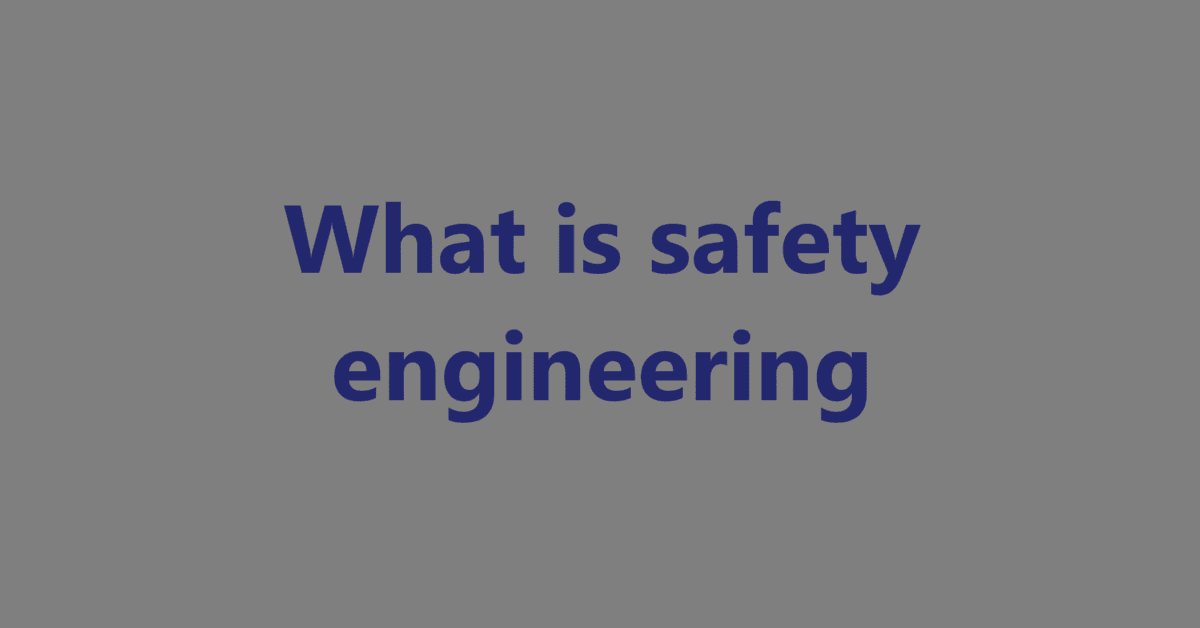Safety engineering is a field of engineering focused on the identification, analysis, and mitigation of risks associated with various systems, processes, and environments to ensure the safety of people, property, and the environment. It encompasses a wide range of domains, including but not limited to:
- Hazard Identification and Risk Assessment: Safety engineers analyze potential hazards in workplaces, products, and processes. This involves identifying risks, assessing their likelihood and potential consequences, and prioritizing them for action.
- Design for Safety: This principle involves integrating safety features into the design of products, systems, and infrastructures right from the outset. Engineers use design principles that minimize hazards and encourage safe operation.
- Safety Management Systems: Implementing structured management systems, safety procedures, and protocols is essential for ensuring ongoing safety in organizations. This includes developing safety policies, conducting training, and promoting safety culture.
- Regulatory Compliance: Safety engineers ensure that organizations comply with relevant laws, regulations, and standards. This can include safety regulations set by agencies such as OSHA (Occupational Safety and Health Administration) in the United States or equivalent organizations in other countries.
- Accident Investigation: In the event of an incident, safety engineers analyze the root causes to prevent future occurrences. This involves collecting data, conducting interviews, and implementing corrective actions.
- Training and Awareness: Safety engineers often play a role in educating employees and stakeholders about safety practices, emergency procedures, and regulatory requirements.
Areas of Specialization
- Industrial Safety: Focuses on minimizing risks in industrial environments.
- Process Safety: Concentrates on chemical and process industries, often involving hazardous materials.
- Transportation Safety: Includes safety in the transport of goods and people, covering everything from road safety to aviation.
- Environmental Safety: Deals with protecting the environment during industrial and other processes.
Where to Study Safety Engineering
If you’re interested in pursuing a career in safety engineering, you can explore various pathways:
- Degree Programs: Look for bachelor’s and master’s programs in safety engineering, industrial engineering, or related fields such as occupational health and safety, environmental health, and systems engineering. Many universities offer specialized programs that combine engineering principles with safety education.
- Online Courses and Certifications: Platforms like Coursera, edX, and LinkedIn Learning offer courses in safety management, risk assessment, and other relevant topics. Certifications from recognized institutions (e.g., Certified Safety Professional (CSP) or Associate Safety Professional (ASP)) can also enhance your credentials.
- Technical Institutions: Some technical colleges offer diplomas or certifications in safety engineering or related fields. These programs are often more practical and designed for those looking to enter the workforce quickly.
- Professional Associations: Organizations such as the American Society of Safety Professionals (ASSP) or the National Safety Council (NSC) provide resources, networking opportunities, and professional development that can be beneficial for aspiring safety engineers.
- Internships: Gaining practical experience through internships or co-op positions in industries relevant to safety engineering will help you understand real-world applications and build connections in the field.
Recommended Schools
Some reputable institutions known for their engineering or safety programs include:
- University of California, Berkeley: Offers a top-tier program in industrial engineering and operational research with a focus on safety practices.
- Michigan Technological University: Known for its industrial health and safety programs.
- Tulane University: Offers programs in public health and environmental safety.
- University of Central Florida: Has a dedicated engineering program focused on safety.
When choosing a program, consider factors such as faculty expertise, research opportunities, industry connections, and the specific focus of the curriculum. Connecting with professionals in the field and seeking advice through academic and industry forums can also provide valuable insights.
In conclusion, safety engineering is a critical field aimed at protecting human life and the environment through systematic risk management and safety processes. Studying safety engineering is facilitated through various educational pathways, each offering unique benefits depending on your career aspirations.


